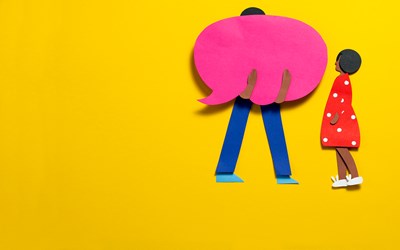How to talk to children about racism
- Have conversations about this often, not just when it's in the news.
- Keep the conversation going and let children know it OK to ask questions.
- Encourage children to understand the lived experience of ethnically minoritised groups better.
- listening to people who have experienced racism and accepting what they say as truth.
- calling out racism and discrimination wherever you see it. and using your own privilege to draw attention to it.
- continuing to learn about inequality and how it affects others.
- regularly assessing your own thoughts about racism and discrimination.
- passing on what you learn to those around you, including family, friends and colleagues.
Under five years
- Talk about fairness, being kind and accepting others for who they are.
- Celebrate difference.
For primary school age children
- Discuss social media, read books or watch shows together that deal with racism or stereotypes.
- Let them ask questions.
- Let them know they can come to you if they’re confused about anything or have particular worries.
For older children and teenagers
- Let them lead the conversation so they feel confident sharing their ideas or experiences.
- Provide a safe and comfortable environment for them to express themselves.
- Listen and ask questions without judging them.
- 56 Black Men – a campaign challenging the negative image of Black men throughout mainstream media.
- NSPCC shop – we have a range of children's books on racial diversity and black history.
- Inclusive books for children – a charity that aspires for mainstream children’s books to be inclusive, and for inclusive children’s books to be mainstream.
- we aren’t all the same and the world would be a very boring place if everyone was the same.
- we can learn from people with different backgrounds and cultures to us.
- the human race is diverse and that’s a good thing.
Encourage conversation, understanding and empathy with people who are different from them. Help children to notice race and racial difference and appreciate it.

How racism affects children
- Racism and racial abuse or bullying can be really distressing for children and young people.
- It can lead to feelings of isolation, depression, anger or even shame about their race or how they look.
- Racism or racial bullying can be overt or openly hostile, such as being called racist names or being sent threats.
- It can be harder to recognise and challenge subtle comments that put a child or young person down and devalue their experience or identity.
- Any form of racism is distressing for children and young people and can have a significant impact on their mental health.

What to do if a child is experiencing racial bullying
Listen to children
Show them you care
Decide how you'll support them
Help them get support
- excluding the person responsible for racial bullying or abuse
- involving the police
- further staff training
- changing your policy and educating the child’s peer group on diversity and inclusion.
"I hate going to school, I feel lonely there. I’m the only black student in my year and everyone thinks it’s OK to call me offensive names. It annoys me but when I ask them to stop, they say I’m overreacting."
Boy, aged 13*

What is race?
- Black British
- British Asians
- British Sikhs
- British Jews
- Irish Travellers
- Romany Gypsies
- White British.
Race is a protected characteristic in law under the:
It’s illegal to discriminate against someone, or treat them differently, because of their race.
What is racism?
Race discrimination, Equality and Human Rights Commission
In 2022/23, Childline delivered 302 counselling sessions where the child mentioned experiencing bullying or cyberbullying targeting their race, ethnicity, religion, or culture. In the same year, there were 28 contacts to the NSPCC Helpline from adults with concerns about these issues.
Types of racism and racial discrimination
Discrimination
Harassment
- spoken or written words.
- offensive emails.
- comments online.
- facial expressions.
- social media posts.
- jokes.
Victimisation
Overt racism
Covert racism
Worried about a child?
You can contact the NSPCC Helpline by calling 0808 800 5000, emailing help@NSPCC.org.uk or completing our report abuse online form.
Reporting hate crime to the police
Childline: support for young people
- Racism and racial bullying - advice on what racism is and how to get support
- Discrimination, hate crime and equality - support to help young people recognise and get support if they're experiencing discrimination
- How you look - support around body image and developing confidence with how you look
- Understand me - a campaign challenging racial sterotypes and discrimination
- Get support - contact Childlline counsellors, online or over the phone.
- Bullying and discrimination message boards - a safe space where children can get support from other young people.
You can help us to support more families.
More support and advice for parents
*Disclaimer:
Snapshots are based on real Childline service users but are not necessarily direct quotes. All names and potentially identifying details have been changed to protect the identity of the child or young person involved. Photographs have been posed by models.
Illustration credits
Illustrations by Sinem Erkas, and Harriet Nobel.
Parenting advice row: see individual pages for details.





